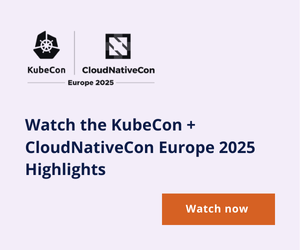-
Beyond skeleton pipelines: who owns your software pipeline?
Are your "skeleton pipelines" secretly killing your velocity? Discover the hidden cost of an "ownership vacuum" in software delivery, wasting precious dev hours. Learn why treating pipelines as a product, not an afterthought, is crucial for improving efficiency, reducing technical debt, and making every deployment a smooth success.
-
The ten pillars of pragmatic deployments
Unlock the secrets to flawless software delivery! Explore the "10 Pillars of Pragmatic Deployments" that ensure repeatability, visibility, and auditability. Learn how to master rolling forward, standardize processes, and coordinate releases for robust, high-performing software pipelines.
-
Five Reasons Standalone Vulnerability Scanning Isn’t Enough in 2025
Vulnerability scanning alone doesn’t cut it anymore. While it’s long been a core security practice, scanning tools can’t tell you which vulnerabilities are exploitable, how attackers would target them, or which ones pose real risk. This article explores the limitations of vulnerability scanning, the shortfalls of traditional vulnerability management, and why organizations must adopt a risk-based, context-driven approach to application security. Learn how to prioritize based on exploitability, integrate security across the SDLC, and move toward continuous, intelligent threat detection.
-
5 Smart API Gateway Strategies to Unlock Developer Productivity
Discover how leading platform teams are redefining the developer experience through modern API gateway practices. This article explores five core strategies—ranging from zero-friction onboarding to AI API governance—that empower developers, streamline operations, and reinforce security and observability. Learn how tools like Traefik Labs are helping organizations transform their API gateways into powerful productivity engines, all while maintaining control, resilience, and scalability in today’s cloud-native and AI-driven landscape.
-
Is It Time to Migrate? A Practical Look at Kubernetes Ingress vs. Gateway API
Still battling Kubernetes Ingress complexities? Discover why it's time to migrate! This guide unpacks the limitations of traditional Ingress and reveals how the Kubernetes Gateway API, implemented by Calico Ingress Gateway with Envoy proxy, offers a standardized, role-aware, and feature-rich solution for secure, streamlined traffic management.
-
Who's in Charge, The Shared Responsibility Model for API and AI/ML Model Versionin
As AI adoption accelerates, managing APIs and ML models at scale is no longer just a technical concern—it's a strategic imperative. This article explores the "Shared Responsibility Model," a forward-thinking approach that bridges MLOps and APIOps using Kubernetes-native tools. Discover how modern organizations are scaling AI safely, maintaining API stability, and accelerating innovation by aligning API management platforms with ML serving systems.
-
Security Benchmarking Authorization Policy Engines: Rego, Cedar, OpenFGA & Teleport ACD
In collaboration with Teleport, Doyensec has developed the Security Policy Evaluation Framework (SPEF) — a dynamic testing and benchmarking tool for evaluating the security, performance, and reliability of popular authorization policy engines like Rego, Cedar, OpenFGA, and Teleport ACD. Built with modular architecture and containerized execution, SPEF allows researchers and engineers to validate policies under consistent, controlled conditions. This article walks through its architecture, supported engines, and key insights from early testing across 27 threat-driven test cases.
-
AWS VPN: Types, Benefits, and Troubleshooting Tips
Unlock seamless, secure cloud connectivity! Explore AWS VPN types (Site-to-Site, Client VPN), their benefits, and essential setup tips. Learn how to troubleshoot common issues and discover how tools like Netmaker offer robust alternatives for building scalable, resilient networks.
-
Where Large Language Models (LLMs) meet Infrastructure Identity
As Large Language Models (LLMs) begin interfacing directly with real infrastructure, securing their access becomes critical. This article explores how the Model Context Protocol (MCP) enables LLMs to interact with databases and systems—and how Teleport’s Infrastructure Identity Platform ensures secure, auditable access. Learn how teams can enforce least-privilege policies, prevent over-permissioning, and maintain full audit trails even with AI in the loop.
-
A Guide to Cyber Attack Maps for Network Protection
Visualize the battlefield! Discover how real-time cyber attack maps offer crucial insights into global threats and targeted attacks, empowering your IT and security teams with enhanced situational awareness and streamlined communication to protect company networks.
-
How Teleport Simplifies Just-in-Time Access
Just-in-time (JIT) access is essential in cloud-native environments—but many implementations fall short. Teleport transforms JIT access into a native, secure-by-default capability by embedding it directly into identity, policy, and workflow infrastructure. From automated approvals to ephemeral credentials and unified audit logging, this article explores how Teleport enables least privilege access without the manual overhead or security gaps common in traditional JIT models.
-
LoRaWAN Explained: Protocol, Perks, and Use Cases
Unpack LoRaWAN: the low-power, long-range protocol powering the IoT revolution! Discover its unique features, star-of-stars architecture, and diverse applications from smart cities to industrial automation. Learn how it delivers cost-effectiveness, scalability, and enhanced connectivity, and how Netmaker boosts its network security.
Filter & Sort


















